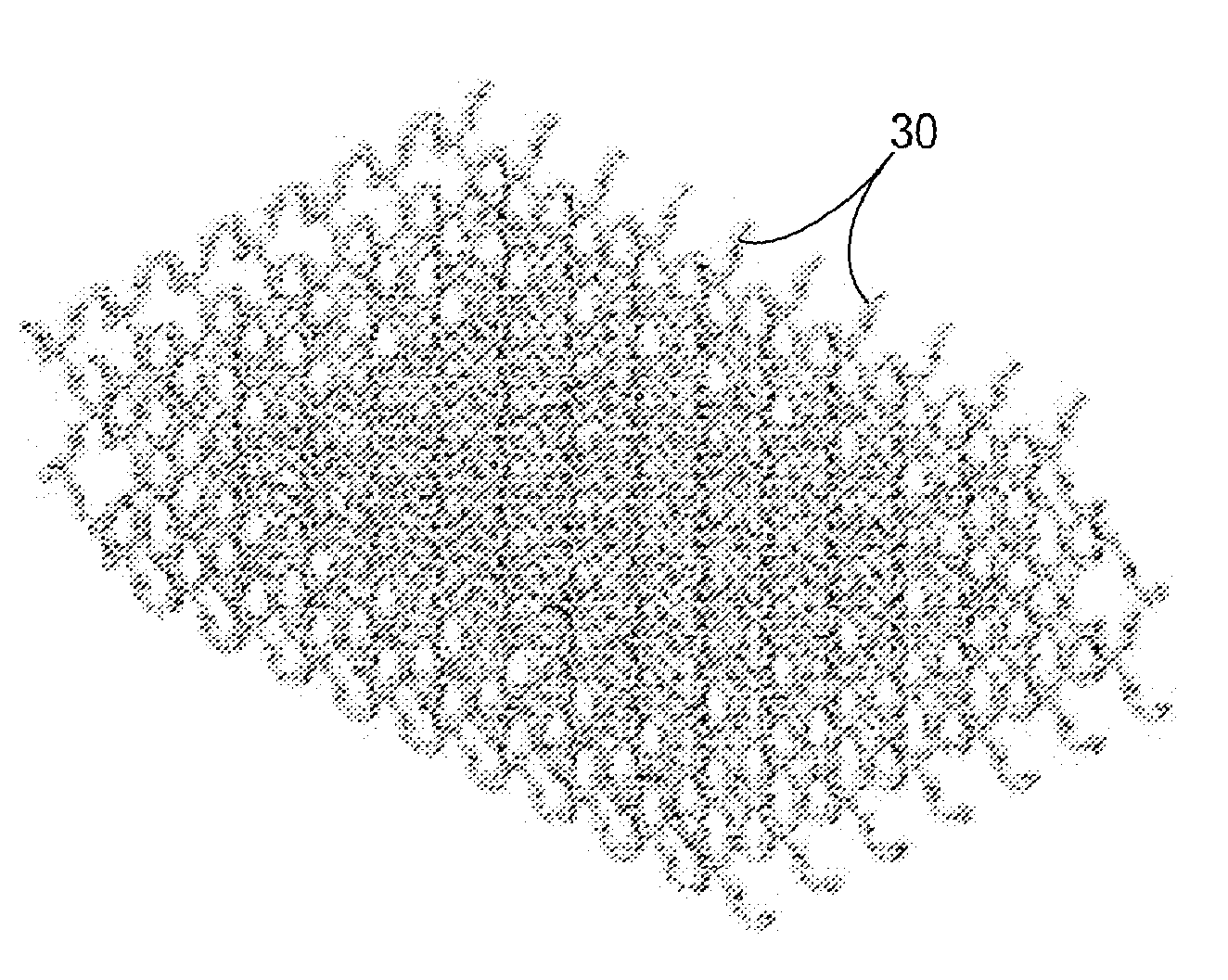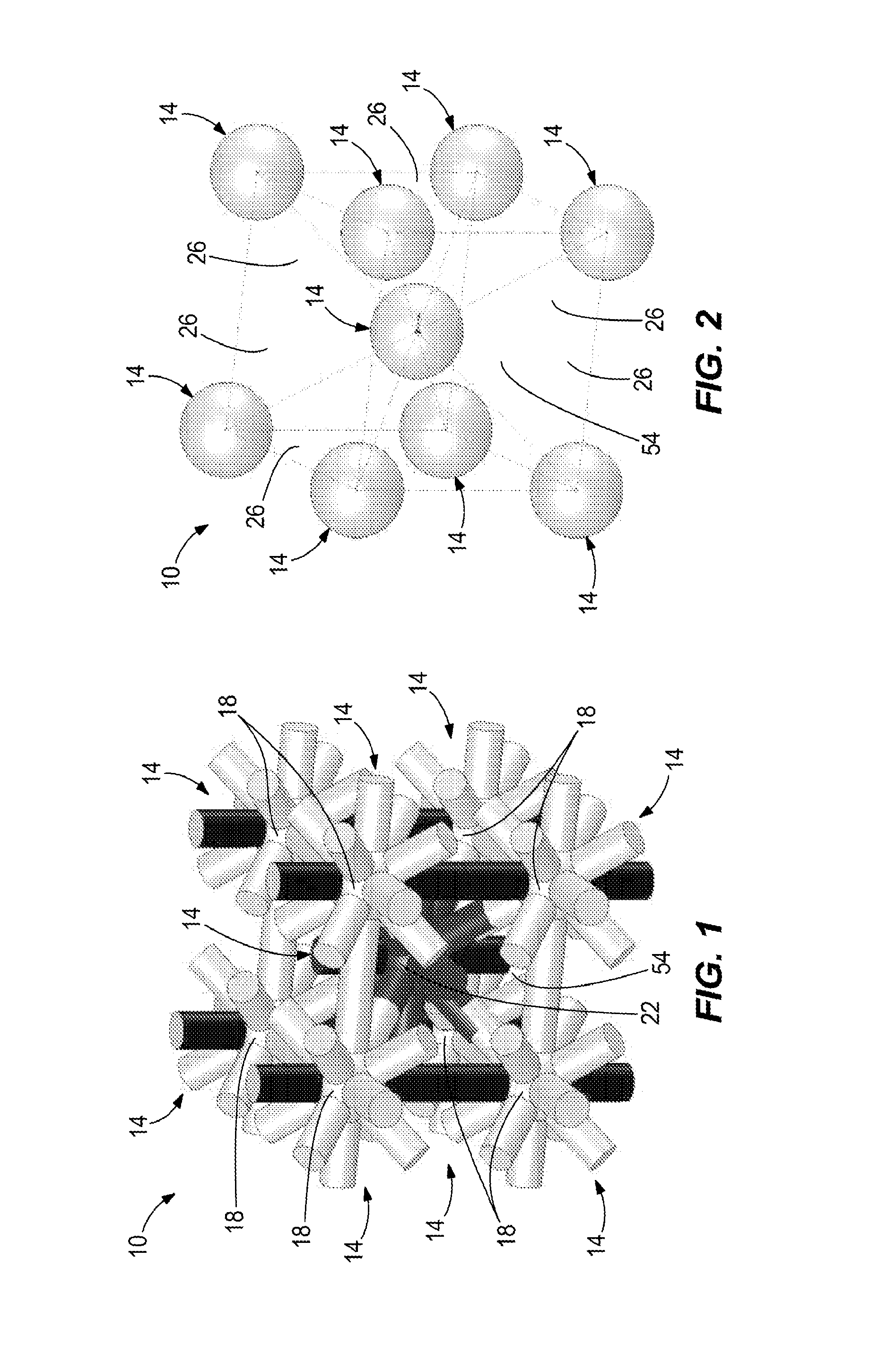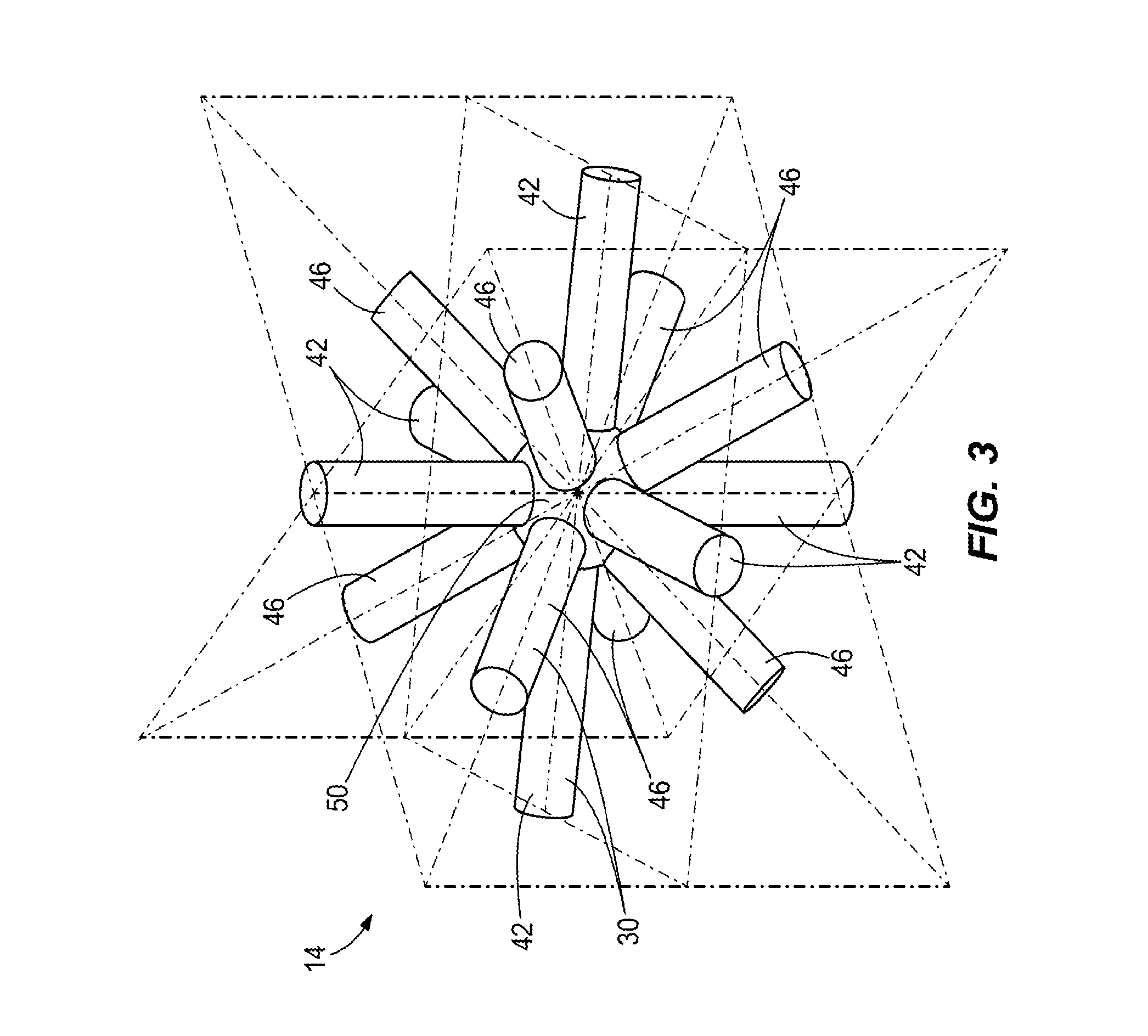Lattice structures
a technology of lattice structure and truss, which is applied in the direction of indirect heat exchangers, lighting and heating apparatus, instruments, etc., can solve the problems of limiting the potential for multi-functional applications, preventing the development of highly robust and efficient structures, and not being able to conform to shape or load directions
- Summary
- Abstract
- Description
- Claims
- Application Information
AI Technical Summary
Benefits of technology
Problems solved by technology
Method used
Image
Examples
Embodiment Construction
[0036]Before any embodiments of the invention are explained in detail, it is to be understood that the invention is not limited in its application to the details of construction and the arrangement of components set forth in the following description or illustrated in the following drawings. The invention is capable of other embodiments and of being practiced or of being carried out in various ways.
[0037]With reference to FIGS. 1 and 2, a hexahedral unit cell 10 includes nine unit trusses 14, eight of the unit trusses 14 being disposed at vertices 18 of the hexahedral unit cell 10 and one of the unit trusses 14 being positioned within the hexahedral unit cell 10. In one construction, one of the unit trusses 14 is disposed at a centroid 22 of hexahedral unit cell 10. In the illustrated construction, each unit truss 14 has exactly the same geometry and orientation within the hexahedral unit cell 10. As illustrated in FIG. 2, the illustrated hexahedral unit cell 10 resembles a body-cen...
PUM
 Login to View More
Login to View More Abstract
Description
Claims
Application Information
 Login to View More
Login to View More - R&D
- Intellectual Property
- Life Sciences
- Materials
- Tech Scout
- Unparalleled Data Quality
- Higher Quality Content
- 60% Fewer Hallucinations
Browse by: Latest US Patents, China's latest patents, Technical Efficacy Thesaurus, Application Domain, Technology Topic, Popular Technical Reports.
© 2025 PatSnap. All rights reserved.Legal|Privacy policy|Modern Slavery Act Transparency Statement|Sitemap|About US| Contact US: help@patsnap.com



